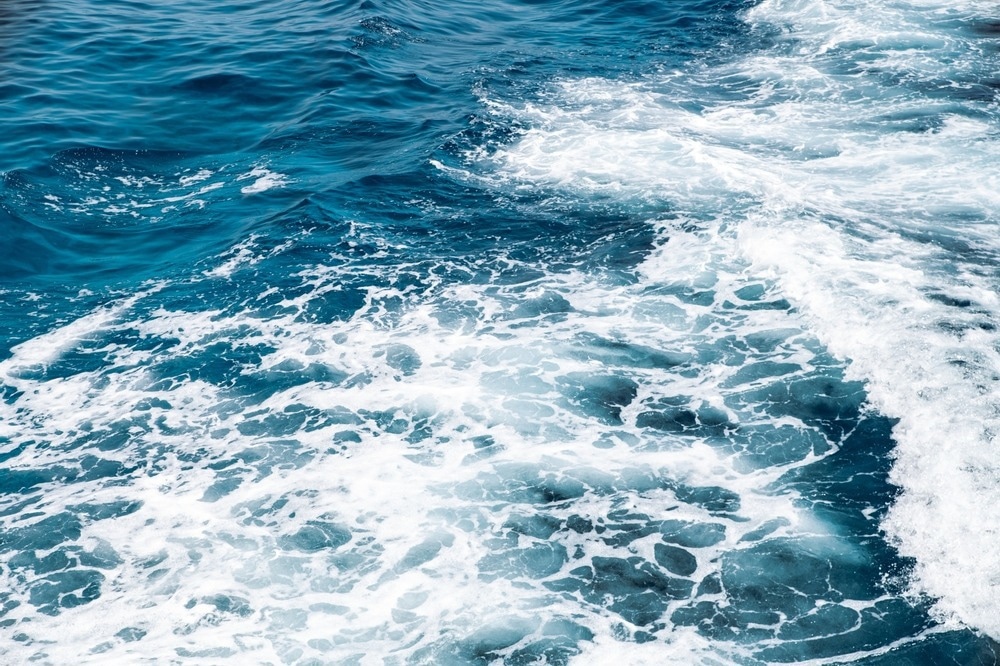Around 70% of the Earth’s surface has been covered by water. Furthermore, 97% of all the water on Earth is seawater, which cannot be classed as drinking water due to its high salt content.

Image Credit: David Prado Perucha/Shutterstock.com
However, what if one could exploit its possibility as a new source of renewable energy?
A research group headed by Professor Changshin Jo (Graduate Institute of Ferrous & Energy Materials Technology (GIFT), Department of Chemical Engineering) and Ph.D. candidate Hyebin Jeong (Chemical Engineering) at POSTECH (Pohang University of Science and Technology) has made progress in this area by verifying the excellent performance of seawater batteries (SWBs) that integrate chelating agents.
Their study outcomes were reported in the Chemical Engineering Journal.
Lithium-ion batteries have turned out to be omnipresent in automotive batteries and portable electronic devices. But they are not without restrictions, as they pose a threat of explosion and might become useless if lithium supplies have been depleted.
For these difficulties to be addressed, the development of next-generation batteries is in progress at present. Among them, seawater batteries constitute a hopeful option that makes use of Na-ions found in seawater to produce energy. Such batteries provide the clear benefit of simple resource accessibility and are eco-friendly, as they need no separate treatment processes.
The high salinity of seawater could be attributed to the existence of Na-ions, which are used by seawater batteries to produce and store electrical energy as the movement between them happens back and forth between the cathode and anode.
But one of the difficulties in using nickel hexacyanoferrate (NiHCF) as an intercalation cathode material for SWBs is the high occurrence of defects at the time of fabrication. For this issue to be fulfilled, the research group synthesize NiHCF with a chelating agent (Sample A) and made a comparison of its performance with untreated NiHCF (Sample B) to assess the chelating agent’s effectiveness.
Having a look at the two samples under a microscope discloses the striking variation in their structure and shape. Sample B comprises randomly aggregated nanosized primary particles for micro-level particles to be developed, whereas Sample A includes individual 200 to 300 nm-sized-cubic-shaped particles.
Even though the separate particle size of Sample B is smaller, it is less beneficial for battery production as a result of the aggregation of multiple particles into bigger cohesive structures.
Besides, the electrochemical performance of both samples was evaluated by the scientists. Initially, they quantified the water content, and it was found that Sample A consisted of lower water content compared to Sample B.
Generally, the electrochemical performance is hindered by the higher water content. Moreover, measurements of voltage and current displayed that Sample A consisted of high energy capacity and efficiency.
An innovative feat was obtained by the research group by executing 2,000 cycles of charging and discharging on batteries by making use of two samples, where Sample A illustrated an outstanding capacity retention rate of around 92.8%. Additionally, the defect generation rate, an earlier drawback of NiHCF, was noted to reduce to 6% in Sample A.
The study outcomes illustrate the excellent performance obtained by the addition of a chelating agent to nickel hexacyanoferrate and utilizing this as a cathode material in seawater batteries. This breakthrough could help encourage the development of seawater batteries as a hopeful candidate for next-generation energy storage systems.
This study was financially supported by the Korea Institute of Energy Technology Evaluation and Planning (KETEP) and the National Research Foundation of Korea (NRF).